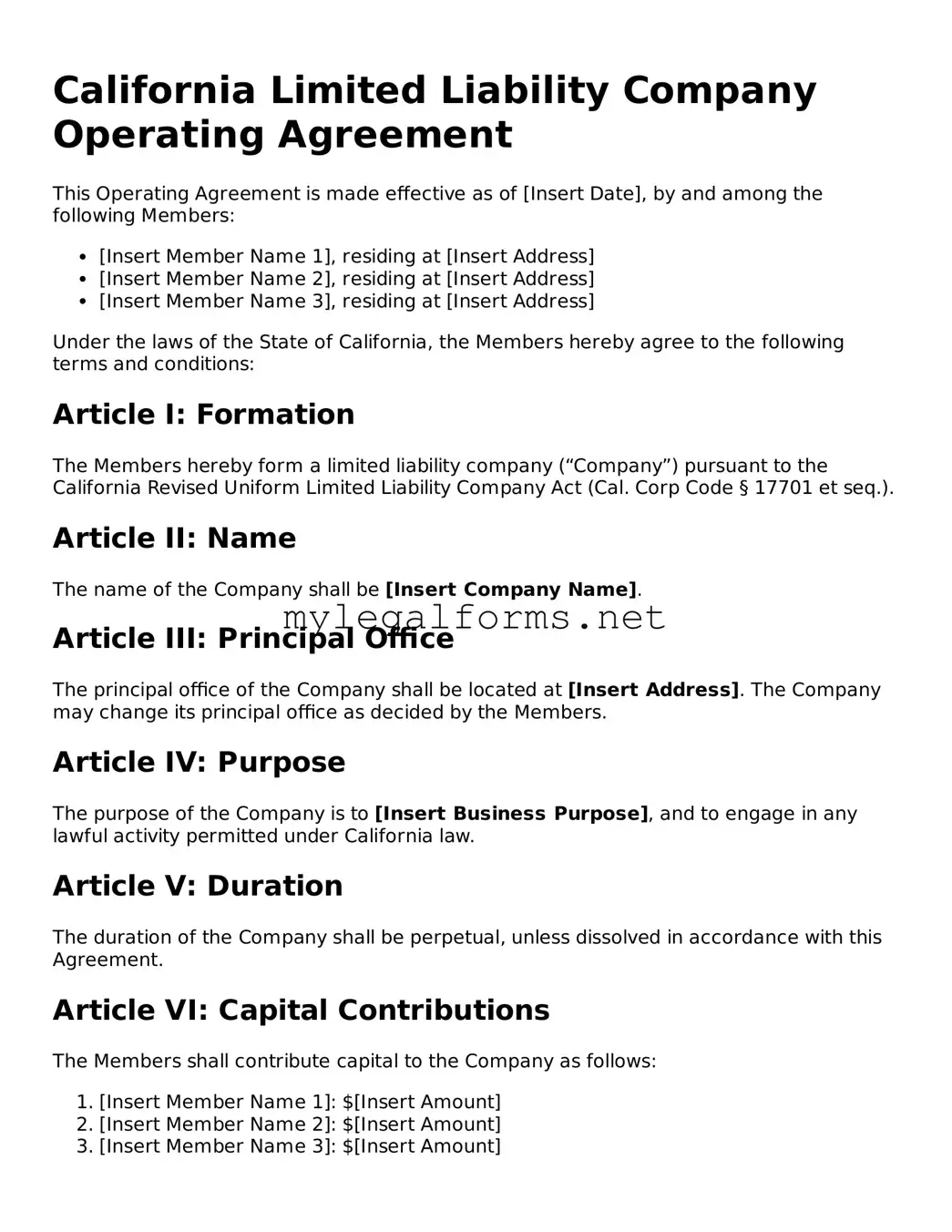California Limited Liability Company Operating Agreement
This Operating Agreement is made effective as of [Insert Date], by and among the following Members:
- [Insert Member Name 1], residing at [Insert Address]
- [Insert Member Name 2], residing at [Insert Address]
- [Insert Member Name 3], residing at [Insert Address]
Under the laws of the State of California, the Members hereby agree to the following terms and conditions:
Article I: Formation
The Members hereby form a limited liability company (“Company”) pursuant to the California Revised Uniform Limited Liability Company Act (Cal. Corp Code § 17701 et seq.).
Article II: Name
The name of the Company shall be [Insert Company Name].
Article III: Principal Office
The principal office of the Company shall be located at [Insert Address]. The Company may change its principal office as decided by the Members.
Article IV: Purpose
The purpose of the Company is to [Insert Business Purpose], and to engage in any lawful activity permitted under California law.
Article V: Duration
The duration of the Company shall be perpetual, unless dissolved in accordance with this Agreement.
Article VI: Capital Contributions
The Members shall contribute capital to the Company as follows:
- [Insert Member Name 1]: $[Insert Amount]
- [Insert Member Name 2]: $[Insert Amount]
- [Insert Member Name 3]: $[Insert Amount]
Article VII: Profits and Losses
All profits and losses shall be allocated to the Members in proportion to their respective capital contributions.
Article VIII: Management
The management of the Company will be conducted by the Members. Each Member shall have equal rights in the management and conduct of the Company’s business.
Article IX: Indemnification
The Company shall indemnify its Members to the fullest extent permitted by California law.
Article X: Amendments
This Operating Agreement may be amended only by a written agreement signed by all Members.
Article XI: Governing Law
This Agreement shall be governed by the laws of the State of California.
IN WITNESS WHEREOF, the undersigned have executed this Operating Agreement as of the date first above written.
_____________________________
[Insert Member Name 1]
_____________________________
[Insert Member Name 2]
_____________________________
[Insert Member Name 3]
_____________________________
[Insert Date]
